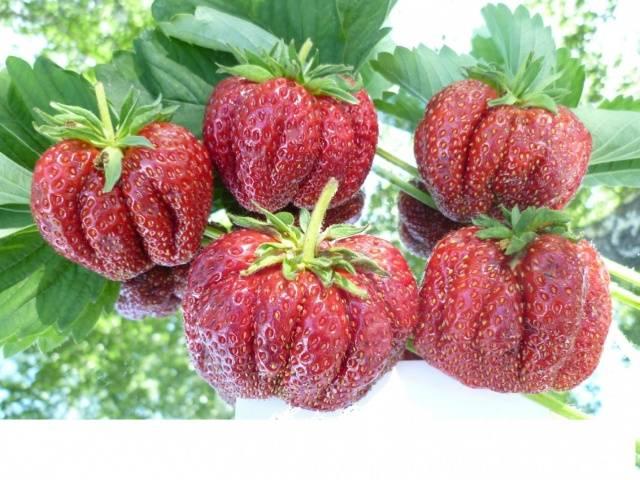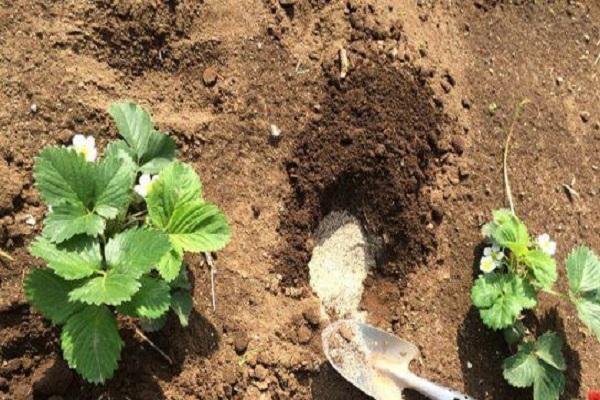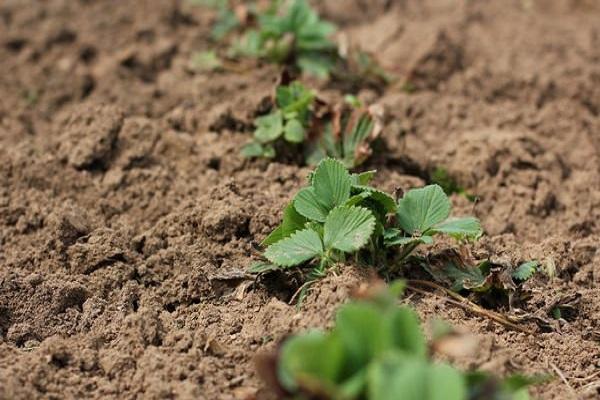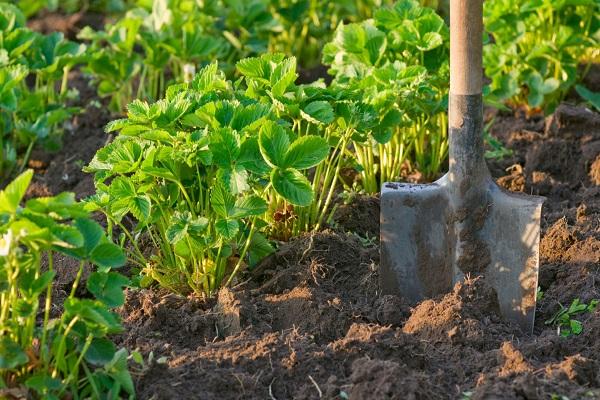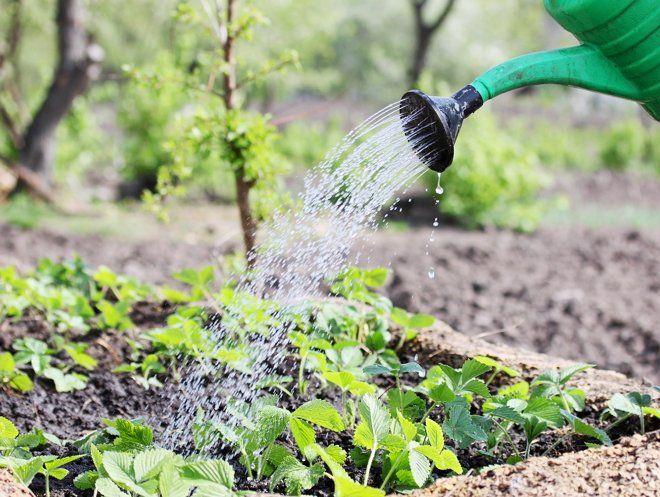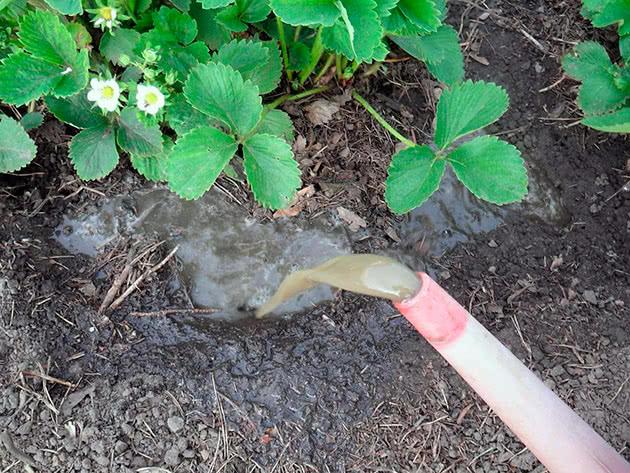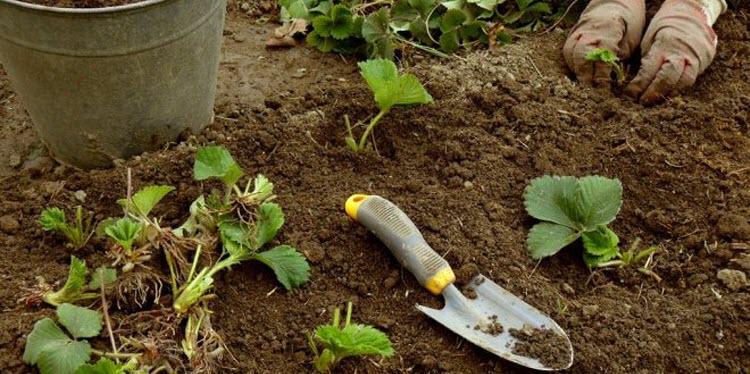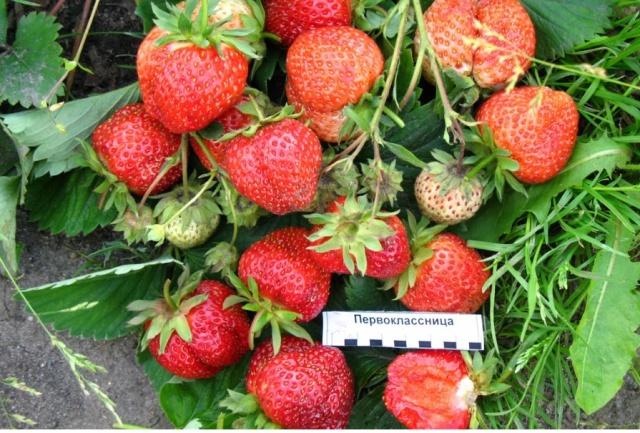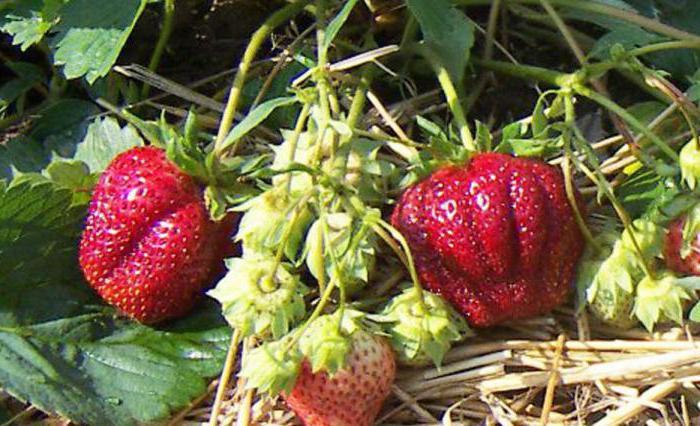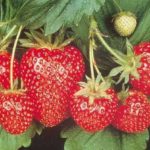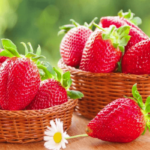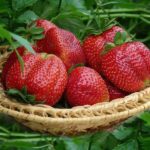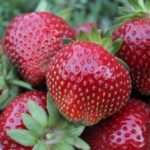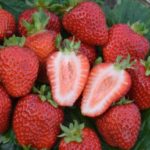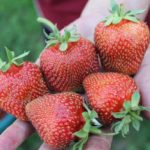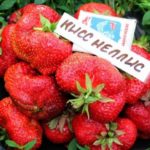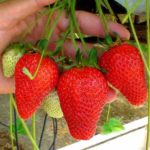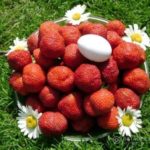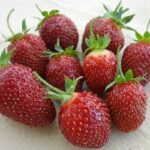The large-fruited First-Class strawberry is successfully grown in Siberia. The variety was bred for the Siberian climate. A team of Altai breeders worked. The authors of First-grader A.D. Zabelina and N.P. Stolnikova used two popular varieties in their work: Fairy and Torpedo.
- Strawberry First-grader: description, characteristics
- Positive and negative aspects of the variety
- How to grow strawberries correctly
- When to plant
- Selection of planting material
- Choosing a landing site
- Landing
- Subtleties of plant care
- How to water correctly
- Fertilizer application
- Loosening
- Weeding
- Mulching strawberries
- Protection of crops from diseases and pests
- Breeding the variety
- Harvesting and storage
Strawberry First-grader: description, characteristics
The Pervoklassnitsa variety is self-pollinating. The plant has male and female flowers. Bush characteristics:
- erect, 30 cm high;
- short;
- well leafed;
- diameter 40 cm;
- the leaves are large, dark green, with a waxy coating;
- cuttings are thick, pubescent;
- there are a lot of whiskers on the bushes.
Medium early variety. Flowering occurs at the end of May and lasts a little less than 2 weeks. The first berries ripen at the end of June. Strawberry yield First-grader 800-1000 g/m². When choosing a variety for planting, study the description of the berries. During the first (1-4) harvests they are large - 35 g, in the subsequent (5-7) they become smaller to 15-20 g. Parameters of strawberry fruits First-grader:
- blunt-conical shape;
- pronounced ribbing;
- taste rating 4 points;
- The main color is red, in the area of the ribs burgundy.
For the Siberian regions, the winter hardiness of the variety is important. During testing, Pervoklassnitsa withstood frost of -33 °C under a 7 cm layer of snow. The variety tolerates drought well; in rainy, cool summers, Pervoklassnitsa bushes are susceptible to gray rot. The variety is not suitable for hot climates. The heat causes the berries to become smaller and lose their taste.
Positive and negative aspects of the variety
Winter hardiness and drought resistance are the main advantages of the Pervoklassnitsa variety. The advantages include stable yield and resistance to diseases (brown spot). Strawberry mites rarely attack strawberries; this has a positive effect on the quality of the fruit.
The variety has disadvantages that need to be assessed before purchasing seedlings. Bushes and fruits suffer from gray rot in rainy weather. The disadvantages many include is extended fruiting. Because of this, the variety is unprofitable to grow for market use.
How to grow strawberries correctly
The strawberry variety Pervoklassnitsa is winter-hardy, but in regions with unstable snow cover the bushes require mandatory shelter for the winter.
When to plant
First-grader seedlings can be planted from April to September. Each time has its own characteristics. It is preferable to plant at the end of July or at the beginning of August. In this case, next year the 1-year-old bush will delight you with a good harvest. It will form 2-3 horns in a year.
Selection of planting material
An experienced gardener knows how to choose high-quality planting material. He visually assesses the condition of leaves, roots, and size. Parameters of high-quality strawberry seedlings with an open root system:
- roots fibrous, light;
- rhizome length 7 cm;
- root collar diameter 0.7-0.8 cm;
- 3-4 green leaves without spots or damage;
- the core is not dry.
Choosing a landing site
Strawberries do not like stagnant moisture, so if the garden is in a lowland, high beds are built for the First-Grader strawberries. Culture doesn't like shadows either.
You should not create a garden bed after nightshade crops (peppers, tomatoes, potatoes, eggplants) and raspberries.
To disinfect the soil at the site of the future bed, you need to sow green manure:
- white mustard;
- oilseed radish.
Green manure grows quickly; when digging, they are embedded in the soil. Their greens kill pathogenic microorganisms and enrich the soil with beneficial microelements.
Landing
The optimal bed width is 1.25 m. The recommended hole layout is 30 x 50 cm. Before planting strawberries First-grader, the bed needs to be filled with compost 8-10 kg/m². Add 1 tsp to each well. mixtures:
- sand - 1 l;
- preparation "Zemlin" (for strawberry pests) - 30 g.
First-grader seedlings are planted so that the central bud is above the ground. The ridge is watered, mulched with humus and compost.2 leaves are left on each bush, the rest are shortened by ½ or cut off completely.
Subtleties of plant care
When planting in summer, the first few days should be shaded from direct sunlight. Monitor soil moisture daily. After 2 weeks, feed the Pervoklassnitsa strawberry seedlings with liquid fertilizer “Biohumus”. After 3 weeks, water them with herbal mash:
- grass - ½ bucket (10 l);
- ash - 0.5 l;
- a handful of granulated mullein;
- drug "Fitosporin" (solution) - 125 ml;
- water.
Before use, dilute the mash with water in a ratio of 1:10. Pour 1 tbsp onto each strawberry bush.
How to water correctly
Watering should be regular. At a depth of 25-30 cm, the soil should be moderately moist. Stagnation of water is the cause of fungal diseases and should not be allowed.
Water consumption for 1 strawberry bush First-grader depends on the structure of the soil, the amount of precipitation, and temperature conditions.
First-grader strawberries are watered until autumn. To feed and prevent infection, potassium permanganate is added to the irrigation water 2-3 times per season. The water for irrigation should turn pale pink. The amount of watering is normal.
Fertilizer application
In the spring, dry granules of superphosphate (2 tbsp/m²), urea (1 tbsp/m²), and potassium nitrate (1 tbsp/m²) are added to the soil for spring loosening. Don't forget about the ashes. It protects against pests and supplies strawberries with nutrients. Up to 2 liters of ash are scattered per 1 m².
Humus and compost are used to mulch the bushes in the spring; if possible, they are added in the summer. First-grader bushes are fed with a solution of mullein or chicken droppings. Liquid mullein is diluted in a ratio of 1:10, liquid chicken manure - 1:10.
A standard feeding scheme is used and carried out at certain phases of strawberry development:
- at the beginning of the growing season;
- before the buds appear;
- after picking berries;
- at the end of August or beginning of September.
At the end of summer, after fruiting, First-grader is fed with nitroammophos, superphosphate, and potassium nitrate.
Loosening
Only the top 2 cm layer is carefully loosened between the bushes. The row spacing is treated with a hoe or flat cutter to a depth of 6-8 cm. The ridge is processed after each rain. Loosening prevents crust formation and improves strawberry nutrition. During the flowering and fruiting period, only row spacing is loosened.
Weeding
Weeds take away nutrients from strawberries, shade them, and impair ventilation of the bed, so weeding is carried out regularly. Combine it with loosening. Some weeds, carriers of fungal infections, serve as a haven for insects. On a clean ridge, First-Glasser strawberries are less likely to suffer from infections.
Mulching strawberries
Mulch makes caring for strawberries easier. The soil underneath is always moist, saving water. The crust does not appear on the ground. Insects do not grow on a ridge covered with a layer of straw, rotted sawdust or peat. Bushes are less damaged by fungus in summer.
The berries do not rot without contact with the ground and are clean. Instead of organic mulch, you can use black agrospan. It is laid early in the spring, before the bushes have grown. For bushes, holes are cut or cross-shaped cuts are made. Mulch is necessary for this variety because the flower stalks lie down under the weight of the berries.
Protection of crops from diseases and pests
During the rainy season, the crops and bushes of First-grader are affected by gray rot. To prevent it, the ridges are covered with a layer of mulch.Among the drugs used are “Topaz”, “Fitosporin”, “Baktofit”. To prevent pests and diseases, they resort to safe folk remedies:
- onions and garlic are planted on the strawberry bed;
- marigolds are planted around the perimeter;
- spray with infusion of hot pepper with the addition of liquid soap.
Slugs and snails are collected from the garden beds by hand. If the plot is severely damaged by insects, the bushes are sprayed with a solution of the drug "Actellik".
Breeding the variety
First-grader strawberries are propagated by 1-2nd order rosettes and by dividing the bush. 2-year-old plants are suitable for propagation. The seed method is not practiced because varietal characteristics are not preserved.
Harvesting and storage
The Pervoklassnitsa variety has 1 wave of fruiting. It is long lasting. The berries do not ripen quickly - from the end of June to the end of July. The harvest is harvested 5-7 times. Berries can be stored in the refrigerator for no more than 2 days. During transportation, the fruits lose their marketability.
First-class berries are not suitable for market sale. The variety is worth growing for home consumption. The harvest can be used for preparations (jam, preserves) and consumed fresh.

